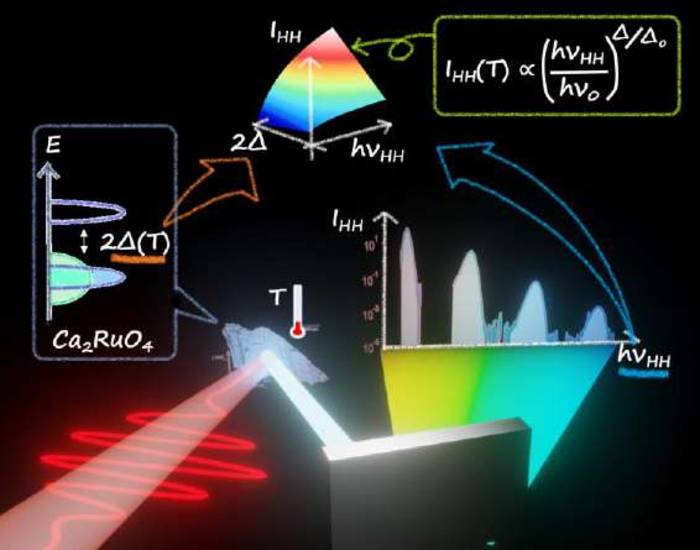Reviewed by Alex SmithApr 6 2022
Materials scientists may soon be able to influence the characteristics of materials using light.
 Scaling law in Mott-insulating Ca2RuO4. Image Credit: KyotoU/Kento Uchida.
Scaling law in Mott-insulating Ca2RuO4. Image Credit: KyotoU/Kento Uchida.
Scientists from Kyoto University and Kurume Institute of Technology have identified a scaling equation that governs the formation of high-order harmonics in the solid-layered perovskite Ca2RuO4.
High-order harmonic generation is a nonlinear optical phenomenon in which a material emits superior ultraviolet photons in response to collisions with high-intensity light.
The phenomenon, which was first observed in atomic gas systems, has since paved the way to attosecond science. But it is slightly more unpredictable in some strongly correlated solids, like Ca2RuO4.
Kento Uchida, Study First Author, Kyoto University
Due to the obvious tremendous interaction among electrons in these substances, studying how these electrons move in the form of light is the only way to determine the properties of high-order harmonic production.
The researchers set out to investigate the relationship between temperature and photon emission in Ca2RuO4 to answer this question, which has never been validated experimentally. They measured and mapped out high harmonic production intensity at temperatures ranging from extremely low 50 to moderate 290 K using a mid-infrared pulse.
The scientists discovered high-order harmonic production that was hundreds of times more powerful than at ambient temperature in the low end. With rising gap energy (the energy needed for electrons to conduct electricity) and a drop in temperature, photon emissions intensified.
The researchers discovered that such emissions occurred in the material’s Mott-insulating phase, wherein high electron repulsion and high gap energy change the metal from an electrical conductor to an insulator.
We discovered that high-order harmonics in strongly correlated materials highly depend on the gap energy of the materials.
Kento Uchida, Study First Author, Kyoto University
This scaling law can lead to more precise descriptions of non-equilibrium electron dynamics in powerfully correlated materials which is a key problem in condensed matter physics.
Uchida says, “Our findings also provide a foundation for materials design to achieve more efficient nonlinear optical devices.”
Journal Reference:
Uchida, K., et al. (2022) High-Order Harmonic Generation and Its Unconventional Scaling Law in the Mott-Insulating Ca2RuO4. Physical Review Letters. doi.org/10.1103/PhysRevLett.128.127401.